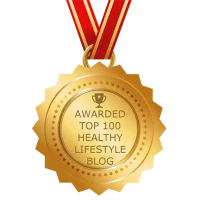Hypertension, often referred to as high blood pressure, is a serious global health concern. This “silent killer” often lurks undetected, silently increasing the risk of heart disease, stroke, and other life-threatening complications. This article delves into the fascinating history of our understanding of hypertension, explores the complex factors that contribute to it, and examines the current strategies for its management.
Hypertension may be a silent threat, but it doesn’t have to be a life sentence. Through a combination of lifestyle modifications, early detection, and proper treatment, individuals with hypertension can live long and healthy lives. By understanding the causes and taking proactive steps to manage it, you can silence the threat of hypertension before it can silence you.
A Historical Journey: From Ancient Observations to Modern Measurement
The concept of blood pressure has roots stretching back centuries. Ancient Egyptians and Romans noted the importance of pulse in health assessment, though their understanding was limited. The first documented attempt to measure blood pressure came in the 17th century by French scientists Jean-Louis Prevost and Etienne Hales. They employed a primitive apparatus involving a horse, a long tube, and mercury – a far cry from the automated cuffs we use today.
The 19th century saw significant advancements. Karl von Rokitansky, a Viennese pathologist, linked high blood pressure to organ damage in autopsies. Meanwhile, Samuel Siegfried Karl von Basch constructed the first sphygmomanometer, a device for measuring blood pressure indirectly through the brachial artery. However, it wasn’t until the 20th century that hypertension truly came into focus.

In 1905, Russian doctors Nikolai Korotkov developed the now-ubiquitous Korotkoff sounds technique, allowing for the measurement of both systolic (peak) and diastolic (resting) pressure during cuff deflation. This innovation paved the way for widespread blood pressure monitoring and diagnosis of hypertension.
The mid-20th century witnessed the establishment of standardized blood pressure classifications and the first treatment options. Early medications included diuretics and reserpine, although their side effects were often significant. The latter half of the century saw a surge in research and development of more effective and tolerable drugs.
Today, blood pressure measurement is a cornerstone of preventive healthcare. Modern devices, including automated and ambulatory blood pressure monitors, provide greater accuracy and convenience. This, coupled with improved medications and a growing emphasis on lifestyle modifications, empowers individuals to manage their hypertension effectively.
The Silent Threat: Understanding Hypertension
Hypertension is a chronic condition characterized by persistently elevated blood pressure in the arteries. Normally, blood pushes against the artery walls to deliver oxygen and nutrients throughout the body. However, when this force becomes consistently too high, it puts undue stress on the arteries and vital organs. Over time, this can lead to serious health complications, like heart attack, stroke, kidney failure, and even vision loss.

There are two main categories of hypertension:
Primary (Essential) Hypertension: This form, responsible for 90-95% of cases, has no single identifiable cause. It’s likely a result of a combination of genetic predisposition, environmental factors, and lifestyle choices.
Secondary Hypertension: This type has a specific identifiable cause, often related to an underlying medical condition.
Understanding the type of hypertension you have is crucial for tailoring appropriate treatment.
Unveiling the Culprits: Exploring the Causes of High Blood Pressure. Despite significant progress, the exact causes of hypertension, particularly primary hypertension, remain complex and multifaceted.
Primary Hypertension: Several factors contribute to primary hypertension:
Genetics: A family history of hypertension increases one’s risk. Multiple genes are likely involved, each with a small effect.
Diet: Excessive sodium intake and a diet low in fruits, vegetables, and potassium are risk factors. A diet high in saturated and trans fats can also contribute.
Weight: Obesity significantly increases the risk of hypertension. Excess weight puts additional strain on the cardiovascular system.
Physical inactivity: A sedentary lifestyle contributes to high blood pressure. Regular physical activity helps keep blood vessels flexible and lowers blood pressure.
Alcohol consumption: Excessive alcohol intake can elevate blood pressure. Alcohol can interfere with the body’s ability to regulate blood pressure and can also lead to weight gain, another risk factor.
Smoking: Smoking narrows arteries and increases blood pressure. The chemicals in cigarettes damage the lining of blood vessels and make them stiffer, raising blood pressure.
Stress: Chronic stress can lead to temporary or persistent rises in blood pressure. Stress hormones like cortisol can constrict blood vessels and increase heart rate, both of which can raise blood pressure.
Sleep apnea: This condition, characterized by pauses in breathing during sleep, can disrupt sleep patterns and contribute to hypertension. Sleep apnea can also lead to oxygen deprivation, which can damage blood vessels and increase blood pressure.

Secondary Hypertension (continued):
Kidney disease: The kidneys play a vital role in regulating blood pressure. When the kidneys are not functioning properly, they can retain fluids and electrolytes, leading to an increase in blood pressure.
Certain hormonal disorders: Conditions like Cushing’s syndrome (excess cortisol production) and hyperthyroidism can cause imbalances that contribute to hypertension.
Aortic stenosis (narrowing of the aorta): This narrowing can obstruct blood flow and increase the pressure required to pump blood throughout the body.
Use of certain medications: Some medications, such as certain birth control pills, NSAIDs (nonsteroidal anti-inflammatory drugs), and decongestants, can raise blood pressure as a side effect.
It’s important to note that these are just some of the potential causes of hypertension. Consulting a healthcare professional for diagnosis and guidance on the specific cause in your case is crucial.
Taming the Silent Killer: Strategies to Manage Hypertension
Early detection and management of hypertension are critical to prevent complications. Here are some principal strategies:
Lifestyle Modifications:
These form the cornerstone of hypertension management, even for those on medications. They include:
Dietary Changes: A heart-healthy diet rich in fruits, vegetables, whole grains, and low in saturated and trans fats and sodium is essential. The Dietary Approaches to Stop Hypertension (DASH)
diet is a proven approach.
Weight Management: Losing weight, medically supervised weight loss, even modestly, can significantly reduce blood pressure.

Regular Exercise: Engaging in regular physical activity, like brisk walking or swimming, for at least 30 minutes most days of the week is crucial.
Smoking Cessation: Quitting smoking is essential for reducing cardiovascular risks, including hypertension.
Stress Management: Techniques like meditation, yoga, and relaxation exercises can help manage stress and potentially lower blood pressure.
Limiting Alcohol Consumption: Moderate alcohol intake is generally considered alright, but excessive consumption can raise blood pressure.
Adequate Sleep: Aim for 7-8 hours of quality sleep each night. Sleep deprivation can contribute to stress and hormonal imbalances, both of which can elevate blood pressure.
Beyond Lifestyle: When Medication is Necessary
Lifestyle modifications are often the first line of defense, but sometimes medication is necessary to achieve optimal blood pressure control. A variety of medications are available, each with its own mechanism of action and side effect profile. Your doctor will work with you to find the medication or combination of medications that is most effective and tolerable for you. Here are some general categories of hypertension medications:
Diuretics: These medications help the kidneys remove excess fluid from the body, reducing blood pressure.
ACE inhibitors (angiotensin-converting enzyme inhibitors): These medications relax blood vessels by blocking the production of a substance that constricts them.
ARBs (angiotensin II receptor blockers): These medications work similarly to ACE inhibitors but by blocking a different part of the renin-angiotensin system.
Beta-blockers: These medications slow down the heart rate and reduce the force of heart contractions, which lowers blood pressure.
Calcium channel blockers: These medications relax the muscles in the walls of blood vessels, allowing blood to flow more easily.
It’s important to adhere to your medication regimen as prescribed by your doctor for effective blood pressure control.





